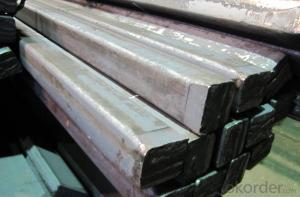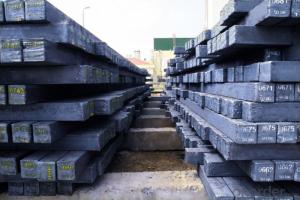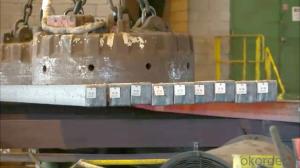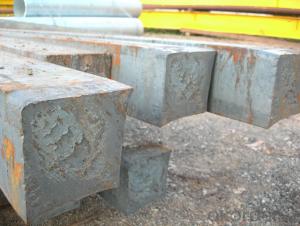Q235/3SP 150MM Blast Furnace Hot Rolled Steel Billet
- Loading Port:
- Tianjin
- Payment Terms:
- TT OR LC
- Min Order Qty:
- 2000 m.t.
- Supply Capability:
- 30000 m.t./month
OKorder Service Pledge
OKorder Financial Service
You Might Also Like
Description of Q235/3SP 150MM Blast Furnace Hot Rolled Steel Billet
Our hot dip galvanised steels consist of a steel substrate with a metallic zinc coating applied by means of a continuous hot dip galvanising process. Metallic zinc coatings are available in steel grades ranging from steel for bending and deep drawing applications, to structural steels and high yield strength steels.
A glossy surface finish obtained under specific skin-pass conditions (either non-skin-passed or skin- passed with smooth cylinders to obtain low roughness) can be provided if required at time of enquiry.
Advantage of Q235/3SP 150MM Blast Furnace Hot Rolled Steel Billet
Uncoated CR steel sheet With the features of in line with the international highest standards in demension and shape, excellent surface finish and properties, the products are mainly used in home appliance and automobile industries.
Galvanized steel sheet(include HDG and EG)
With the features of good corrosion resistance, the products are mainly used in automobile, home appliance, electronics, building and machinery manufacture industries, etc.
Precoated steel sheet With the features of enviromental protection and good processablility, long lasting surface durability, rich in colors, the products are maily used in building, home appliance and furniture industries, etc.
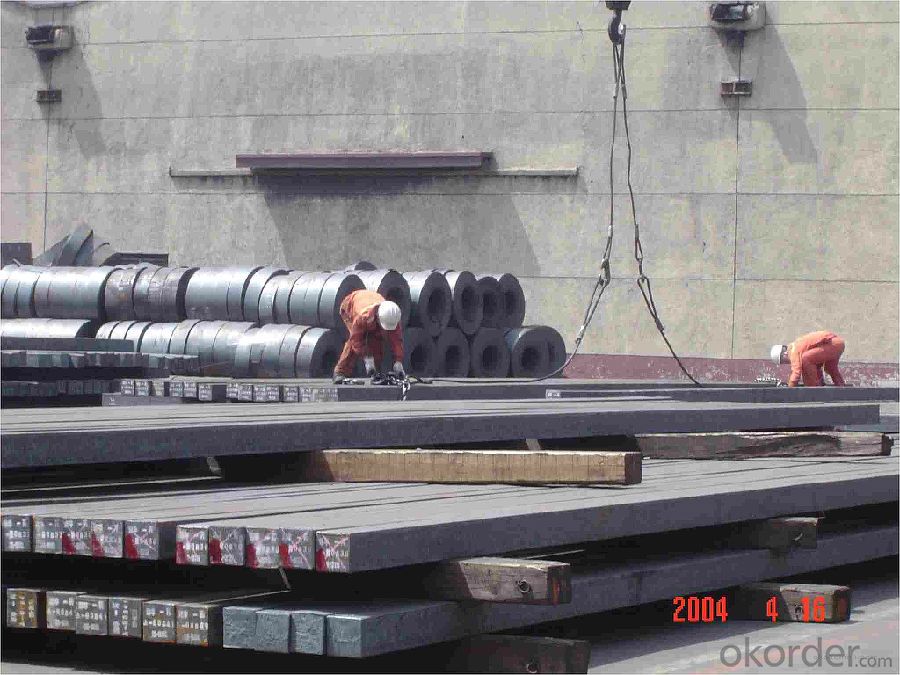
Applications of Q235/3SP 150MM Blast Furnace Hot Rolled Steel Billet
Our hot dip galvanised steels can be used in a very wide range of applications for industrial markets, both indoors and outdoors. Some of the most common applications are:
Building: wide sections for roofing and cladding, doors, door frames, metallic ceilings, partitions, structural members etc
Domestic appliances: all appliances for this sector (both white and brown goods) are manufactured with hot dip galvanised steels
Miscellaneous: electrical cabinets, aeraulic components, air conditioners, road signs etc
Zinc hot dip galvanised steel is suitable for contact with foodstuffs under certain conditions, as specified in European directive 89/109/EEC and French standard NF A 36-712-1. Please contact us for further information on this subject.
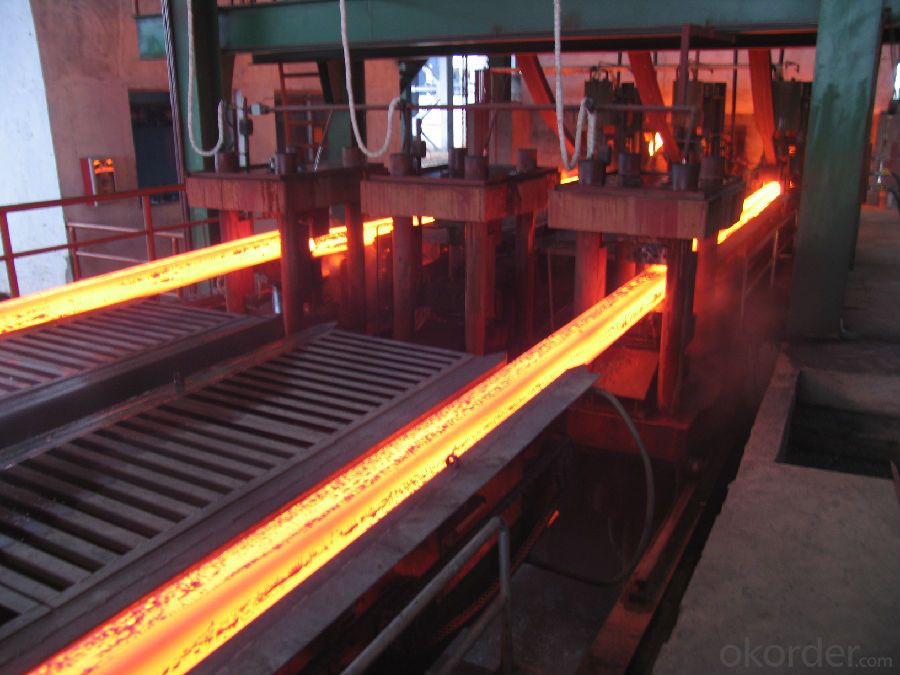
Specifications of Q235/3SP 150MM Blast Furnace Hot Rolled Steel Billet
Quality | Q/BQB 440-2003 | JIS G3312-1994 JIS G3321 | EN 10326-2004 | ASTM A653-02a |
EN 10327-2004 | (BASE PLATE) | |||
(BASE PLATE) | ||||
Commercial Steel | DC51D | SGCC SGLCC | DX51D+Z DX51D+AZ | CS Type A/B/C |
Forming Steel | St01,St02,St03 | SGCD1 SGLCD1 | FS Type A, Type B | |
Drawing | DC52D /DC53D | - | DX52D+Z DX52D+AZ | DDS TYPE A/C |
Steel | DX53D+Z DX53D+AZ | |||
Structural | S280GD (StE28) | SGC400 SGLC400 | S280D+Z DX54D+AZ | SS275 |
Steel | S350GD (StE34) | SGC440 SGLC440 | S350D+Z S350D+AZ | SS340 Class1 |
FAQ of Q235/3SP 150MM Blast Furnace Hot Rolled Steel Billet
We have organized several common questions for our clients,may help you sincerely:
1. How Can I Visit There?
Our company is located in Tianjin City, China, near Beijing. You can fly to Tianjin Airport Directly. All our clients, from home or aboard, are warmly welcome to visit us!
2. How Can I Get Some Sample?
We are honored to offer you sample.
3. Why choose CNBM?
Our delivery time about 15-20days for standard sizes, if you have other requirements like hardness, quanity and width ,it is about 20-40days. But don't worry we also try our best for the delivery time ,because time longer and our cost is higher.
- Q:How are steel billets tested for mechanical properties?
- Steel billets are tested for mechanical properties using various methods to ensure their quality and suitability for specific applications. One common method is the tensile test, which involves pulling a small sample from the billet and subjecting it to a gradually increasing tensile force until it fractures. This test helps determine important mechanical properties such as ultimate tensile strength, yield strength, and elongation. Another method used is the hardness test, which measures the resistance of the billet's surface to indentation. This test provides information about the billet's hardness, which is crucial for assessing its ability to withstand wear and deformation. Additionally, the impact test is performed to evaluate the billet's toughness and ability to absorb energy. This involves striking a standardized sample with a pendulum and measuring the energy absorbed during fracture. The impact test is particularly important for applications where the steel billet is subjected to sudden loads or impacts. To assess the billet's ability to resist deformation, the compression test is employed. In this test, the billet is subjected to a compressive force until it deforms or fractures. The results obtained from this test help determine the billet's compressive strength and deformation characteristics. Furthermore, non-destructive testing methods such as ultrasonic testing and magnetic particle inspection are used to detect any internal defects or irregularities in the billet. These methods involve the use of specialized equipment to examine the billet's internal structure and identify any flaws that may compromise its mechanical properties. Overall, steel billets undergo a comprehensive range of tests to ensure their mechanical properties meet the required standards. These tests help guarantee the quality and reliability of the billets, enabling them to be used in various industries such as construction, automotive, and manufacturing.
- Q:What are the main factors affecting the hardenability of stainless steel billets?
- The main factors affecting the hardenability of stainless steel billets are the chemical composition of the steel, the cooling rate during heat treatment, and the presence of alloying elements such as chromium, nickel, and molybdenum. The chemical composition determines the steel's ability to form martensite, a hard and brittle phase, during quenching. The cooling rate influences the transformation of austenite, the high-temperature phase, into martensite. Alloying elements enhance the hardenability by promoting the formation of martensite and improving the steel's ability to retain its hardness upon cooling.
- Q:What are the main challenges in the transportation of steel billets?
- The main challenges in the transportation of steel billets include ensuring proper handling and securing of the heavy and bulky loads, preventing damage or deformation during loading and unloading processes, and complying with safety regulations for transporting hazardous materials. Additionally, factors such as limited availability of specialized equipment, fluctuations in fuel prices, and coordinating logistics for long-distance shipments can pose challenges for efficient and cost-effective transportation of steel billets.
- Q:How do steel billets contribute to the manufacturing of water and wastewater treatment equipment?
- Steel billets are used in the manufacturing of water and wastewater treatment equipment as they serve as the raw material for various components such as pipes, tanks, and structural supports. These billets are melted and shaped into the required forms, ensuring the durability and strength of the equipment. Additionally, steel billets can be further processed to create corrosion-resistant coatings, ensuring the longevity and reliability of the equipment in harsh water and wastewater environments.
- Q:How are steel billets used in the manufacturing of castings?
- Steel billets are used in the manufacturing of castings as a raw material that is heated and melted to create the molten metal for casting. The billets are then poured into molds to form the desired shape, which is later solidified and cooled to obtain the final casting product.
- Q:What are the different surface treatments for corrosion resistance in steel billets?
- There are several surface treatments available for corrosion resistance in steel billets, including hot-dip galvanizing, electroplating, and mechanical plating. Hot-dip galvanizing involves immersing the steel billets in molten zinc, creating a protective layer that prevents corrosion. Electroplating uses an electric current to deposit a layer of metal, such as zinc or chromium, onto the surface of the billets. Mechanical plating involves tumbling the billets with metal powder, typically zinc, in a rotating drum to create a protective coating. Each of these treatments provides varying degrees of corrosion resistance and can be chosen based on specific requirements and budget constraints.
- Q:What are the main differences between hot rolled and cold rolled steel billets?
- The main differences between hot rolled and cold rolled steel billets lie in the manufacturing process and the resulting properties of the finished product. Hot rolled steel billets are produced by heating the steel to a high temperature and then rolling it through large rollers. This process allows for the steel to be shaped and formed easily, resulting in a product with a rougher surface and less precise dimensions. Hot rolled steel billets also tend to have a scaled surface due to the high temperature involved in the manufacturing process. On the other hand, cold rolled steel billets are produced by cooling the steel to room temperature and then passing it through rollers at a lower temperature. This process not only results in a smoother surface finish but also allows for tighter tolerances and more precise dimensions. Cold rolled steel billets have a more uniform appearance and are often used in applications that require a higher degree of precision and accuracy. In terms of mechanical properties, hot rolled steel billets generally have a lower strength and hardness compared to cold rolled steel billets. Cold rolled steel billets also tend to have improved surface hardness and a higher degree of dimensional stability. Overall, the main differences between hot rolled and cold rolled steel billets are the manufacturing process, surface finish, dimensional accuracy, and mechanical properties. Hot rolled steel billets are more easily shaped and formed, while cold rolled steel billets have a smoother surface finish and more precise dimensions. The choice between the two depends on the specific requirements of the application.
- Q:What are the main factors affecting the toughness of steel billets?
- There are several main factors that can affect the toughness of steel billets. 1. Composition: The chemical composition of the steel, including the presence of certain elements such as carbon, manganese, and silicon, can significantly impact its toughness. For example, higher carbon content tends to increase hardness but decrease toughness, while the addition of alloying elements like nickel or chromium can improve both strength and toughness. 2. Heat treatment: The heat treatment process, including the rate of cooling and the temperature at which it is performed, can have a significant effect on the toughness of steel. Quenching and tempering are common heat treatment techniques used to enhance the toughness of steel by controlling the microstructure and reducing the presence of brittle phases. 3. Microstructure: The microstructure of steel, which is determined by factors such as cooling rate, grain size, and phase distribution, can greatly influence its toughness. Fine-grained structures tend to exhibit better toughness compared to coarse-grained ones, as smaller grains can inhibit crack propagation. 4. Impurities and inclusions: The presence of impurities and inclusions in steel can negatively impact its toughness. These impurities can act as stress concentrators, leading to localized failure and reduced overall toughness. Therefore, the steelmaking process needs to ensure proper purification and removal of impurities. 5. Manufacturing processes: Various manufacturing processes, such as rolling or forging, can influence the toughness of steel billets. These processes can induce residual stresses and introduce defects that can affect the material's overall toughness. Proper control and optimization of these processes can help enhance the toughness of steel billets. 6. Service conditions: The specific application and service conditions of the steel billets also play a role in determining its toughness requirements. Factors such as temperature, stress levels, and exposure to corrosive environments can impact the material's toughness performance. Understanding and accounting for these conditions is crucial in selecting the appropriate steel grade and ensuring long-term durability. In summary, the main factors affecting the toughness of steel billets include composition, heat treatment, microstructure, impurities, manufacturing processes, and service conditions. By carefully considering and optimizing these factors, manufacturers can produce steel billets with the desired toughness properties for various applications.
- Q:How are steel billets used in the manufacturing of industrial compressors?
- Steel billets are an integral part of the manufacturing process for industrial compressors. These billets, which are essentially semi-finished steel products in the form of a rectangular solid, serve as the starting material for creating various components of the compressor. Firstly, steel billets are heated to high temperatures and then passed through a series of rolling mills to be shaped into specific forms such as bars, rods, or sheets. These processed steel billets are then used to fabricate critical components of the compressor, including the crankshaft, connecting rods, cylinder blocks, and piston rings. The crankshaft, a central component responsible for converting the reciprocating motion of the piston into rotational motion, is typically forged from a steel billet. The billet is subjected to controlled heating, shaping, and machining processes to achieve the desired shape and strength required for the crankshaft to withstand the high pressures and forces within the compressor. Similarly, connecting rods, which connect the piston to the crankshaft, are also manufactured from steel billets. These billets are machined to precise dimensions and undergo various heat treatment processes to ensure optimal strength and durability. Cylinder blocks, the main structural frame of the compressor, are often casted from steel billets. The billets are melted and poured into molds to form the desired shape. Once solidified, the cylinder block undergoes further machining to create the cylinder bores, mounting surfaces, and other necessary features. Additionally, steel billets are used to produce piston rings, which are crucial for maintaining proper compression and preventing leakage. The billets are machined and then subjected to heat treatment processes to enhance wear resistance and ensure a proper fit within the cylinder. Overall, steel billets are essential in the manufacturing of industrial compressors as they provide the raw material for creating key components. The ability to shape and process steel billets allows for the production of strong, durable, and high-performance compressors that can meet the demanding requirements of various industries.
- Q:Can steel billets be used for marine applications?
- Yes, steel billets can be used for marine applications. Steel billets are commonly used in the construction of ships, offshore structures, and marine equipment due to their high strength, durability, and corrosion resistance properties. They provide the necessary strength to withstand the harsh marine environment and can be shaped and welded to meet specific design requirements.
1. Manufacturer Overview |
|
|---|---|
| Location | |
| Year Established | |
| Annual Output Value | |
| Main Markets | |
| Company Certifications | |
2. Manufacturer Certificates |
|
|---|---|
| a) Certification Name | |
| Range | |
| Reference | |
| Validity Period | |
3. Manufacturer Capability |
|
|---|---|
| a)Trade Capacity | |
| Nearest Port | |
| Export Percentage | |
| No.of Employees in Trade Department | |
| Language Spoken: | |
| b)Factory Information | |
| Factory Size: | |
| No. of Production Lines | |
| Contract Manufacturing | |
| Product Price Range | |
Send your message to us
Q235/3SP 150MM Blast Furnace Hot Rolled Steel Billet
- Loading Port:
- Tianjin
- Payment Terms:
- TT OR LC
- Min Order Qty:
- 2000 m.t.
- Supply Capability:
- 30000 m.t./month
OKorder Service Pledge
OKorder Financial Service
Similar products
New products
Hot products
Related keywords
